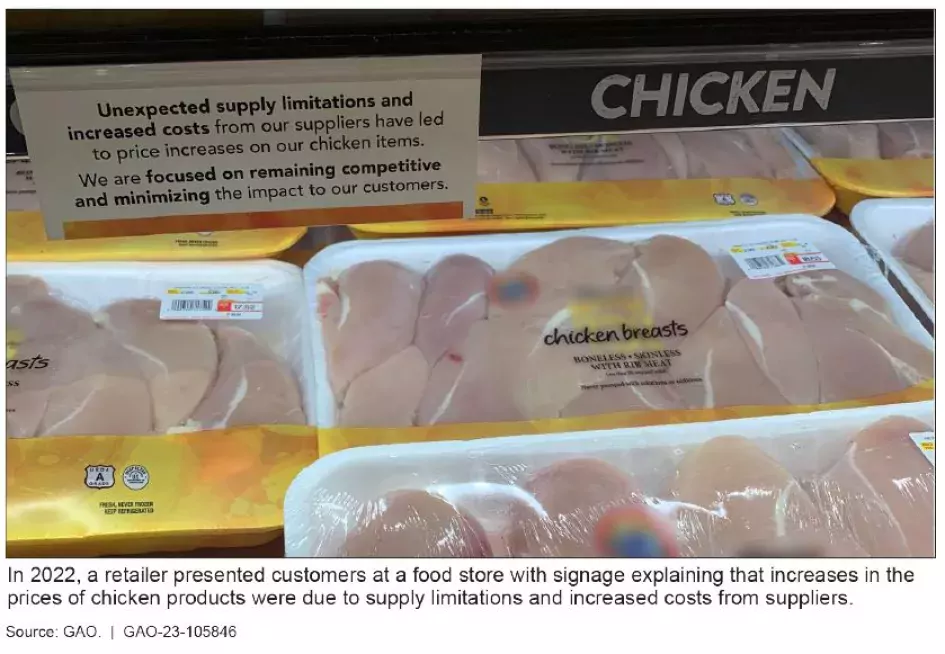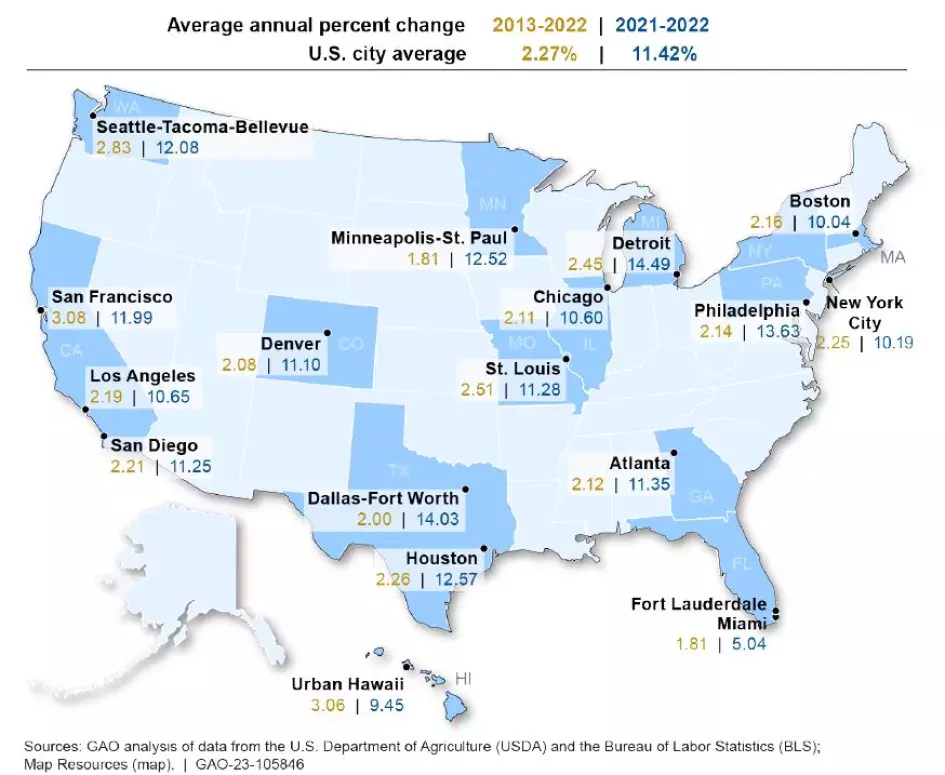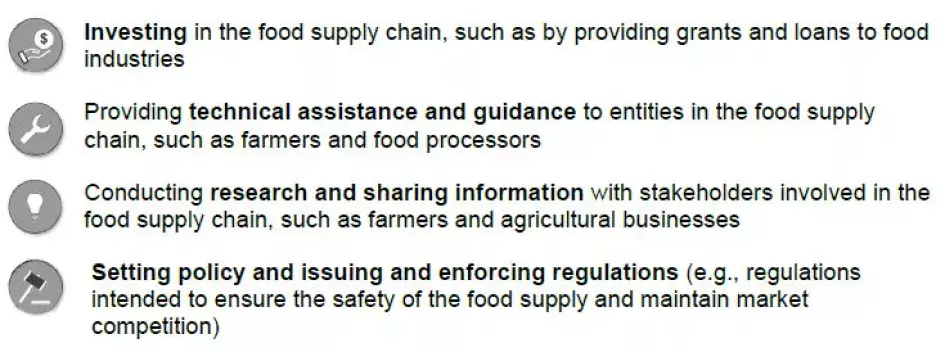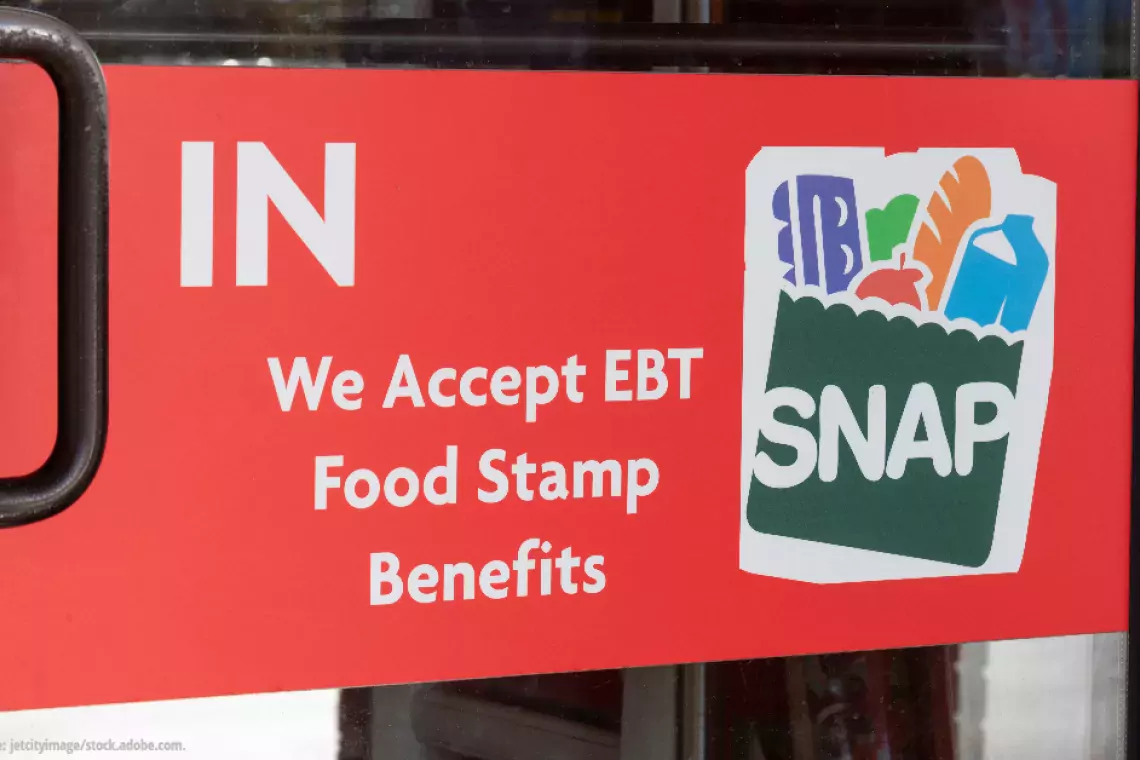Sticker Shock at the Grocery Store? Inflation Wasn’t the Only Reason Food Prices Increased
Last year, U.S. consumers saw the largest annual increase in food prices since the 1980s. While food prices generally increased about 2% in prior years, they increased about 11% from 2021 to 2022. Inflation contributed to the increase. But there were other factors—like global disruptions to the food supply chain—that may have had a greater impact. And not everyone felt this increase the same way.
Today’s WatchBlog post looks at our new report on what contributed to food price increases and their impacts, and why these disruptions may lead to higher prices in 2023.
Image

Besides inflation, what contributed to food price increases?
Disruptions and changes to the food supply chain can affect the prices consumers see at the grocery store. Some of these are long-standing challenges. For example, weather events as well as animal and plant diseases, are common disruptions that can impact the supply available—causing prices to increase. We recently saw the price of eggs increase after an outbreak of Avian Flu. Higher labor and transportation costs are also long-standing challenges that have led to increases in food prices.
But there were some unique challenges in 2022 that may have contributed to the double-digit increase in food prices. For example, COVID-19 caused disruptions across the food supply chain. As U.S. households shifted away from full-service restaurant meals, they purchased more food at grocery stores. There were slowdowns in production at meat processing plants when workers became sick and plants shut down. Similarly, transportation of food was bottlenecked when truck drivers got sick. The war in Ukraine also disrupted the global supply of agricultural commodities—such as wheat, corn, sunflower oil, and fertilizer. This reduction in supply, coupled with a U.S. drought, caused American consumers to see wheat prices increase.
“Prices are expected to grow more slowly in 2023 than they did in 2022. But it's still going to grow more than the historic annual average of 2%,” said GAO’s Steve Morris, an expert in agriculture, during a recent podcast. “When you look at the forecast for this year's prices, they're predicted to increase anywhere from 5 to 10%, and probably settle around 8%. So, they're still going to be really high.”
Listen to our podcast about food prices with GAO’s Steve Morris below.
Where were food price increases seen?
Increases in food prices can create additional hardships for many. Those with higher incomes are better able to absorb the impact of increased costs. But for those living paycheck-to-paycheck, any increase can have a significant effect. This includes low-income households, whose food costs comprise, on average, 30% of their income.
Food prices increases also varied by locality. For example, the highest increase between 2021 and 2022 was seen in Detroit Michigan (about 14.5%). The lowest (about 5%) occurred in the Miami-Fort Lauderdale, Florida metro area.
Average Annual Increase in Food Prices in Selected Metro Areas, 2013-2022
Image

Finally, food price increases from 2021 to 2022 varied by food group. For example, prices for grains and bakery products increased by about 13%, while fruits and vegetables increased by about 9%. Similarly, dairy products increased by about 12%, but meats, poultry and fish increased about 10%.
What’s the federal role in supporting the food supply chain?
As we saw last year, disruptions in the food supply chain can have large impacts on food prices. By addressing supply chain disruptions, the federal government may indirectly take action to address rising food prices. For example, when COVID-19 and the war in Ukraine caused issues in the supply chain, the government granted regulatory relief and other flexibilities to the food industry which may have mitigated some of the factors contributing to food price increases, according to agency officials. For example, by relaxing regulations to let food made for restaurants be diverted to grocery stores, FDA helped to avert food shortages that could've further increased prices during the COVID-19 pandemic. However, the federal government does not have a direct role in controlling price increases, according to the agency officials we interviewed.
Federal agencies’ role in helping to maintain a resilient food supply chain generally fall into four categories:
Image

Learn more about our work on food price increases by checking out our new report and podcast. You can also learn about how federal food assistance programs respond to price increases by reading our January blog post.
- Comments on GAO’s WatchBlog? Contact blog@gao.gov.
GAO Contacts
Related Products

GAO's mission is to provide Congress with fact-based, nonpartisan information that can help improve federal government performance and ensure accountability for the benefit of the American people. GAO launched its WatchBlog in January, 2014, as part of its continuing effort to reach its audiences—Congress and the American people—where they are currently looking for information.
The blog format allows GAO to provide a little more context about its work than it can offer on its other social media platforms. Posts will tie GAO work to current events and the news; show how GAO’s work is affecting agencies or legislation; highlight reports, testimonies, and issue areas where GAO does work; and provide information about GAO itself, among other things.
Please send any feedback on GAO's WatchBlog to blog@gao.gov.




